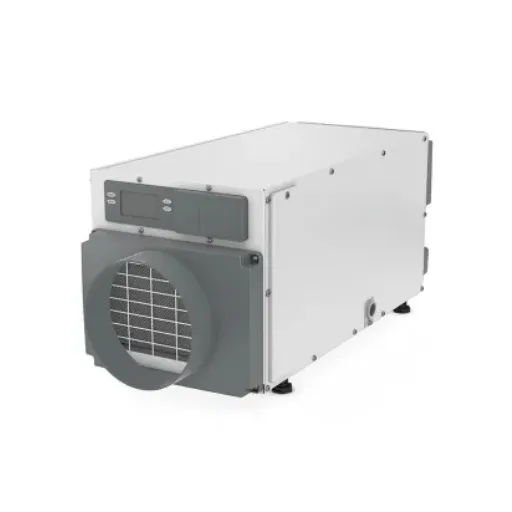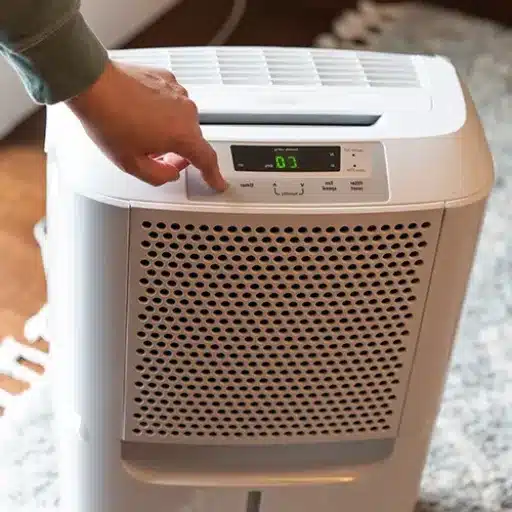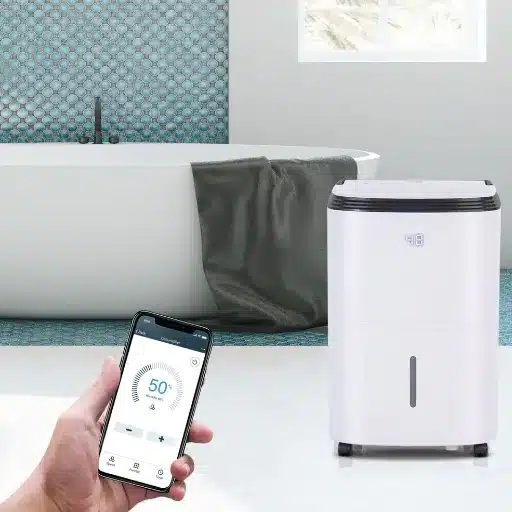The vast majority of properties have neglected crawl spaces. Crawl spaces, however, are critical in preserving a home’s air quality and structural integrity. The crawl space may accumulate excess water which can lead to mold, wood decay, and higher levels of humidity in the home. It is essential to get the appropriate dehumidifier to maintain specific levels of crawl space dryness to protect your home from these issues.
This article focuses on the best rated dehumidifiers for crawl spaces and their features, effectiveness, and benefits. In addition, we will discuss how to pick the best crawl space dehumidifier by analyzing the size, power consumption, and ease of installation. This guide is tailored for anyone who wants to enhance the air quality in the home and mitigate moisture harm to the house while ensuring safety within the property. The necessary information to make the right decision is provided in this guide.
Why do you need a dehumidifier for your crawl space?
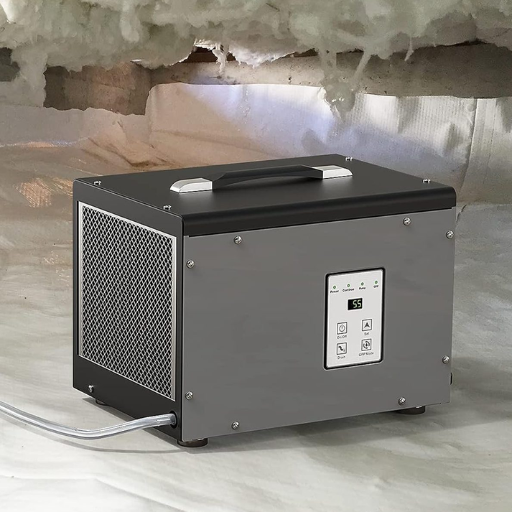
High humidity levels in your crawl space can lead to a host of problems, including mold growth, structural damage, and poor indoor air quality. These conditions not only threaten the integrity of your home but can also pose significant health risks to you and your family. A dehumidifier effectively reduces excess moisture in the air, preventing these issues and creating a stable environment that promotes long-term home protection and comfort.
Understanding crawl space moisture issues
Crawl space moisture issues are primarily caused by poor ventilation, water intrusion, and high humidity levels. These can result from factors such as groundwater seepage, rainwater pooling near your foundation, or condensation due to temperature differences between the crawl space and the surrounding environment. Over time, excessive moisture fosters the growth of mold and mildew, weakens structural components like wooden beams, and attracts pests such as termites. Addressing these issues involves identifying the source of the moisture and implementing solutions like proper drainage systems, vapor barriers, and using an effective crawl space dehumidifier to control humidity levels and maintain a dry, healthy environment.
The impact of humidity on your home’s air quality
Humidity plays a critical role in determining the air quality within your home. High humidity levels, typically exceeding 60%, create an ideal environment for mold, mildew, and dust mites to thrive, potentially triggering allergies, asthma, and other respiratory issues. Consistently elevated moisture can also lead to musty odors and the spread of harmful airborne particles, reducing indoor air quality. On the other hand, excessively low humidity can dry out skin, irritate nasal passages, and compromise wooden furniture or flooring. Maintaining optimal indoor humidity levels between 30-50% is key to preserving both air quality and overall comfort. Using tools like humidifiers, dehumidifiers, and proper ventilation systems helps to achieve this balance effectively, ensuring a healthier living environment.
Signs that your crawl space needs a dehumidifier
A moist and unhealthy crawl space can indicate the presence of a variety of problems for your home and will suggest that you need a dehumidifier. Some of the problems include musty smells emanating from the crawl space which are often a result of mold or mildew growth. Other warning signs include Visible moisture such as condensation on pipes or wet insulation. Pest infestations such as rodents and termites are well known to thrive in moist conditions and this could be a possible indicator of excess moisture in the space. Also, make note of any uneven or buckling floors as the humidity may cause damage to wooden structures. If you tend to suffer from poor quality air indoors or allergies, it may be due to the damp air from the crawl space circulating into the house. Utilizing a dehumidifier can reduce the structural issues and air quality concerns within a home.
How to choose the right size dehumidifier for your crawl space?
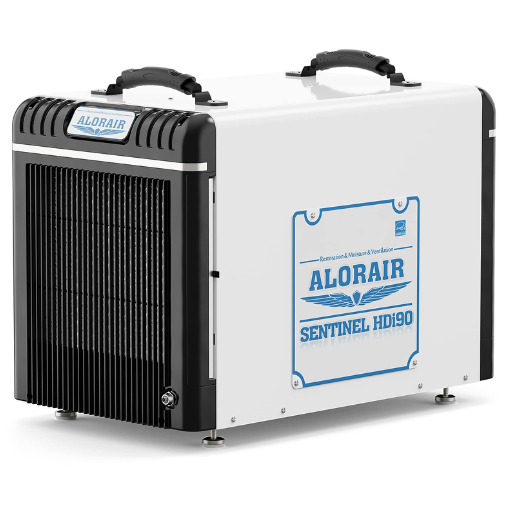
When choosing the right size dehumidifier for your crawl space, consider the square footage of the area and the level of moisture present. For small crawl spaces with mild humidity, a dehumidifier with a capacity of 20 to 30 pints may suffice. For larger spaces or areas with high moisture levels, opt for a unit with a capacity of 50 to 70 pints or more. Additionally, look for features such as energy efficiency, continuous drainage options, and a compact design suitable for confined spaces. Proper sizing ensures optimal performance and long-term protection against excess moisture.
Calculating the square footage of your crawl space
To find out how much area your crawl depth occupies, get a tape measure and measure the length and width of the space. The resulting area can be found by multiplying the width and length. For rest, if the crawl space is of irregular shape, divide the area into smaller parts which are either rectangles or squares and calculate the area of each part and then add the values. This measurement is critical as it aids in determining the correct size of the dehumidifier or other maintenance devices for the crawl space.
Determining the ideal pint capacity for your needs
Selecting the right pint capacity for a dehumidifier depends on the size of your crawl space and the level of humidity present. For spaces up to 500 square feet with low to moderate humidity, a 20-30 pint dehumidifier should suffice. If humidity levels are higher or the space is larger—up to 1,000 square feet—opt for a 30-50 pint unit. Extremely damp or wet crawl spaces or areas exceeding 1,000 square feet may require a dehumidifier with a capacity of 50-70 pints or more. Keep in mind that factors like constant water seepage, nearby weather conditions, and local climate can influence the ideal dehumidifier size. Always consider these variables for efficient and long-lasting moisture control.
Factors affecting dehumidifier size selection
When selecting a dehumidifier size, several factors can significantly influence your choice. First, assess the area’s humidity level; damp spaces like basements may need larger units compared to moderately humid areas. Next, consider the size of the room—larger spaces naturally require higher-capacity dehumidifiers to effectively remove excess moisture. Additionally, environmental factors, such as local climate and seasonal conditions, play a role; regions with high humidity or frequent rain may demand more powerful units. Other considerations include the presence of specific moisture sources, such as water leaks or poor ventilation, which can exacerbate humidity levels. Properly evaluating these factors ensures you choose a unit that optimizes performance and efficiency.
What features should you look for in a crawl space dehumidifier?
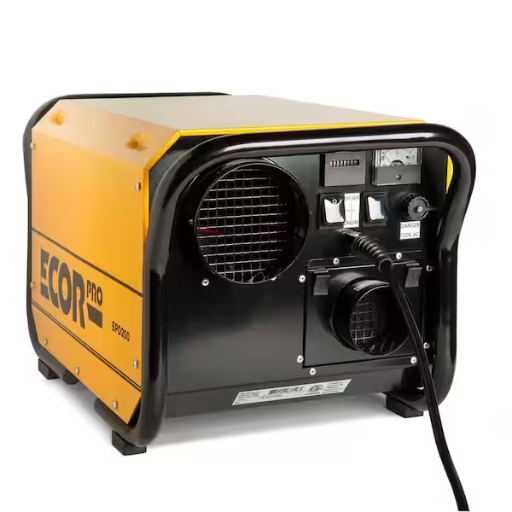
When selecting a crawl space dehumidifier, prioritize key features for optimal performance and durability. Look for a unit with an appropriate capacity, measured in pints of moisture removed daily, to suit the size of your crawl space. Energy efficiency is critical, so consider models with an Energy Star certification to reduce electricity costs. Robust construction and resistance to corrosion are essential for handling the challenging conditions of a crawl space. Built-in pumps or drainage systems simplify water removal, while an adjustable humidistat ensures you can maintain the desired humidity level. Finally, look for features like a washable filter and easy maintenance access to ensure long-term usability.
Energy Star certification and efficiency
Energy Star-certified dehumidifiers are designed to use less energy while delivering optimal performance, making them both environmentally friendly and cost-effective. They achieve this by meeting strict efficiency standards set by the EPA, ensuring reduced energy consumption and lower utility bills. Compared to non-certified models, Energy Star dehumidifiers typically consume 15% less energy, which adds up to significant savings over time. When selecting a unit, ensure it’s appropriately sized for your space, as an oversized or undersized model can reduce efficiency. Additionally, look for units with smart features like auto shut-off or energy-saving modes to further enhance efficiency and extend the device’s lifespan.
Drainage options: pump vs. gravity drain
When choosing between a pump and gravity drain system for your dehumidifier, it’s essential to understand their differences and advantages. A pump-equipped dehumidifier actively pushes water out, allowing for more flexibility in placement, as it can drain vertically or over long distances. This option is ideal for basements or spaces where water disposal cannot rely solely on gravity. On the other hand, gravity drain systems rely on a downward slope to direct water into a floor drain or container. They require the unit to be positioned near an appropriate drain point at a suitable height. While gravity drains are cost-effective and simpler to maintain, pump systems offer superior versatility for challenging layouts or situations where draining over elevation is necessary.
Humidity control and auto-shutoff capabilities
Effective humidity control is a key feature in modern dehumidifiers, allowing users to set their desired humidity levels with ease. Many units are equipped with built-in hygrometers that monitor the surrounding environment and adjust operation accordingly to maintain ideal conditions. This ensures optimal air quality while preventing over-drying, which could damage furniture or other valuables.
Auto-shutoff functions enhance convenience and safety by stopping the unit once the water tank is full or the desired humidity level is reached. This feature not only prevents water overflow but also reduces energy consumption, as the dehumidifier pauses operation until necessary. Together, these capabilities provide a seamless and efficient way to control moisture levels in any space, improving comfort and preserving indoor environments.
How to install a dehumidifier in your crawl space?
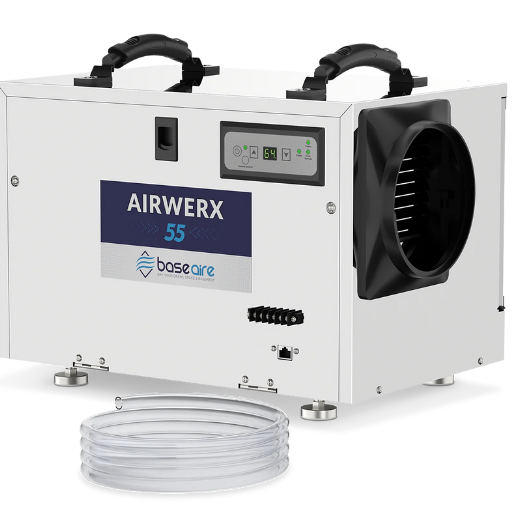
Prepare the Space
Clear out any debris, clutter, or obstructions from the crawl space. Ensure the area is clean and that ventilation points are accessible.
Choose the Right Location
Place the dehumidifier on a level surface, ideally in the center of the crawl space or near the area with the highest moisture levels. Ensure there is enough clearance around the unit for proper airflow.
Set Up Drainage
Attach a drainage hose to the dehumidifier if required. Position the hose so that it leads to a proper drainage outlet, ensuring water can flow out unobstructed.
Plug in the Unit
Connect the dehumidifier to a grounded electrical outlet suitable for the device. Avoid using extension cords to minimize risks.
Adjust Settings
Turn on the unit, configure the humidity level settings to your desired levels (typically between 30-50%), and ensure the auto-shutoff function is enabled.
Monitor Performance
Check the unit periodically to confirm it’s operating correctly and that the drainage system is functioning without leaks or blockages. Regular maintenance is key to long-term efficiency.
By following these steps, you’ll create a healthier and more comfortable indoor environment in your crawl space.
Proper placement for optimal performance
To ensure the dehumidifier works effectively, I place it in a central location within the crawl space, allowing unrestricted airflow around the unit. I avoid placing it directly against walls or near obstructions that might block the vents. Additionally, I make sure it’s positioned on a level surface to prevent vibrations or uneven condensation flow. When connecting the drainage system, I ensure the hose slopes downward to facilitate proper water removal. By following these steps, I’ve maximized the unit’s efficiency in regulating moisture levels.
Connecting the drain hose or pump system
When attaching the drain hose, find the drainage port which is usually located at the back or side of the unit. Use a standard garden hose or the provided drain hose, making sure to attach it securely to this port to prevent leaks. The hose should be positioned with a downward slope without any kinks that would impede water flow, allowing gravity to move the water. For units with an internal pump system, be sure that the pump is turned on and that the hose is directed to a higher drainage area like a sink or window. Make sure all connections and fittings are tight to avoid spills. Regularly check the hose and pump to ensure there are no blockages for effective and unrestricted drainage.
Integrating with existing HVAC systems
The installation of a dehumidifier significantly improves the humidity control and air quality management of an HVAC system. To integrate it into the HVAC system, the dehumidifier should be placed in the return air duct. This allows the dehumidifier to prepare the air to the desired humidity levels before it is sent to all rooms. Homes with multiple rooms are therefore treated uniformly. Always follow the guidelines provided by the manufacturer and choose a dehumidifier that is appropriate for the house, and the flow rate of the HVAC system.
Due to concerns regarding operational inefficiencies, many individuals prefer to seek help from experts for the installation of the dehumidifier to the ductwork and power supply. In any case, modern HVAC systems come with sophisticated functionalities designed for host integration with a plug-and-play dehumidifier for seamless control of performance monitoring. Installation of a dehumidifier can help mitigate excess moisture, reduce energy consumption of the HVAC functions, and maintain a healthy environment.
What are the best crawl space dehumidifier brands?
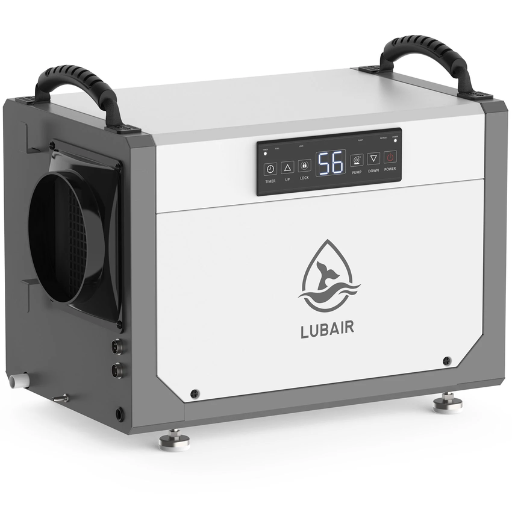
When selecting a crawl space dehumidifier, several leading brands stand out for their performance, reliability, and innovative features. Aprilaire is renowned for its durable models and high moisture-removal capacities. Similarly, Santa Fe offers energy-efficient solutions tailored specifically for crawl spaces. AlorAir is another top contender, praised for its advanced controls and affordability. Additionally, brands like Dri-Eaz and Honeywell provide versatile and dependable options to meet various dehumidification needs. These brands consistently deliver exceptional quality, ensuring a healthier and more efficient home environment.
AlorAir: Commercial-grade options for large spaces
AlorAir has built a reputation on manufacturing powerful and efficient dehumidifiers for even the most rigorous commercial and residential environments. Their units feature high water extraction rates, energy efficiency, dependable rugged parts, and the ability to operate continuously in harsh conditions like basements or crawl spaces. Numerous models have additional features such as built-in condensate pumps, Wi-Fi smart controls, and HGV low-temp defrosting to guarantee optimal performance even with low temperature operation. These reliable and affordable dehumidifiers, which are trusted by restoration professionals, have a vast capacity and high dependability. AlorAir does not compromise on quality when it comes to flood restoration, mold prevention, and dehumidification. They provide comprehensive solutions suitable to modern challenges.
Aprilaire: Whole-house dehumidification solutions
Aprilaire offers advanced whole-house dehumidification systems designed to improve indoor air quality and maintain ideal humidity levels throughout your home. These systems integrate seamlessly with existing HVAC setups, providing consistent, automated control over moisture levels. Aprilaire dehumidifiers are highly efficient, with features such as automatic digital controls, energy-efficient performance, and the ability to remove up to 130 pints of moisture per day, depending on the model. Designed for durability and convenience, they help prevent mold growth, reduce allergen levels, and protect your home’s structural integrity. With Aprilaire, homeowners gain a long-term, reliable solution tailored to large spaces or entire homes.
Crawl Space Ninja: Specialized crawl space moisture control
Crawl Space Ninja specializes in providing tailored solutions for moisture control, improving indoor air quality and structural integrity of homes. Their expertise includes encapsulation, dehumidification, and insulation for crawl spaces, effectively addressing common issues like high humidity, mold, and wood rot. By using advanced vapor barriers and energy-efficient dehumidifiers, Crawl Space Ninja ensures long-lasting protection against moisture seepage. Their services also focus on enhancing energy efficiency, lowering utility costs, and creating healthier living environments. Trusted by homeowners nationwide, Crawl Space Ninja combines top-tier products with professional installations to deliver comprehensive and effective moisture management solutions.
How does crawl space encapsulation work with dehumidifiers?
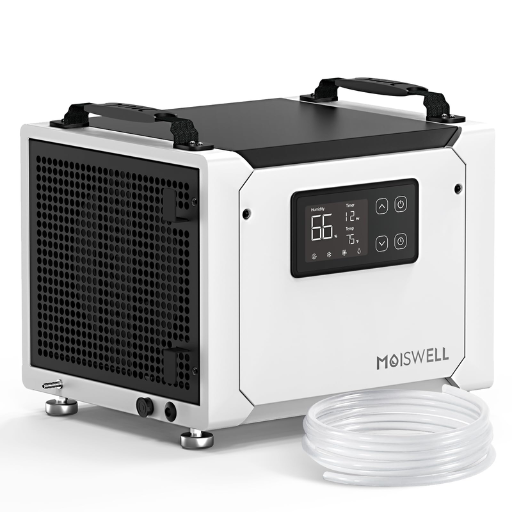
Crawl space encapsulation works with dehumidifiers by creating a sealed environment that prevents outside air and moisture from entering the space. The encapsulation process involves installing a durable vapor barrier across the walls, floors, and sometimes the ceiling of the crawl space, which blocks moisture from the surrounding soil and air. Once the space is sealed, a dehumidifier is used to regulate the humidity levels by removing any residual moisture from the air. This combination ensures a dry, controlled environment that helps protect your home from issues like mold, wood rot, and poor air quality.
Benefits of combining encapsulation and dehumidification
Prevents Mold and Mildew Growth
By controlling moisture levels, this combination effectively inhibits the development of mold and mildew, which can lead to structural damage and negatively affect indoor air quality.
Improves Energy Efficiency
A sealed and dehumidified crawl space reduces the strain on HVAC systems by preventing excess humidity from entering your home, leading to lower energy consumption and utility bills.
Protects Structural Integrity
Encapsulation and dehumidification prevent wood rot and rust by maintaining a dry environment, safeguarding your home’s foundation and other structural components from moisture-related damage.
Enhances Indoor Air Quality
With reduced humidity and no exposure to harmful mold spores or allergens, the air circulating throughout your home becomes healthier, benefiting occupants with allergies or respiratory conditions.
Prevents Pest Infestations
The sealed and controlled environment created by encapsulation and dehumidification is less inviting for pests like termites and rodents, which thrive in damp conditions.
Long-Term Cost Savings
While the initial investment might seem significant, combining both methods can save homeowners money over time by preventing costly repairs, improving energy efficiency, and extending the lifespan of home components.
Vapor barriers and their role in moisture control
Vapor barriers play a crucial role in managing moisture levels within a home by limiting the movement of water vapor through walls, floors, and ceilings. Made from materials like polyethylene plastic or foil-faced insulation, these barriers are typically installed in basements, crawl spaces, or exterior walls to prevent condensation and reduce the risk of mold growth, wood rot, and structural damage. By creating a protective layer, vapor barriers help maintain consistent humidity levels, contributing to a healthier indoor environment and improving energy efficiency. Combining proper installation techniques with other moisture-control measures, such as dehumidification or encapsulation, ensures long-term protection against moisture-related problems.
Maintaining proper insulation in your crawl space
Maintaining proper insulation in your crawl space is crucial for energy efficiency, moisture control, and overall home comfort. Follow these steps to ensure optimal performance:
Inspect and Identify Issues
Regularly inspect the crawl space for signs of damage, such as sagging insulation, moisture buildup, pest infestation, or mold growth. Early detection helps prevent larger problems down the line.
Seal Gaps and Cracks
Properly seal gaps, vents, and cracks in the crawl space to prevent drafts and moisture intrusion. Use caulk or expandable foam for smaller holes and rigid sealants for larger areas.
Replace or Upgrade Insulation
If insulation is damaged or outdated, replace it with high-quality materials suited for crawl spaces, such as fiberglass batts, spray foam, or rigid foam board. Consider using vapor barrier-backed insulation for enhanced moisture resistance.
Install a Vapor Barrier
Cover the floor of the crawl space with a durable vapor barrier to minimize ground moisture. Ensure it is properly secured and overlaps at the seams to create a reliable moisture shield.
Maintain Proper Ventilation and Humidity
Incorporate a dehumidifier or ventilation system to regulate humidity levels and prevent condensation. Keeping the crawl space dry is essential for preserving insulation integrity.
Monitor and Maintain Regularly
Schedule routine inspections and maintenance to keep the insulation and moisture-control measures effective. Address any issues as soon as they arise to prevent costly repairs.
By following these practices, you can ensure that your crawl space insulation remains effective, protecting your home from energy loss, moisture damage, and poor air quality.
How to maintain your crawl space dehumidifier for optimal performance?
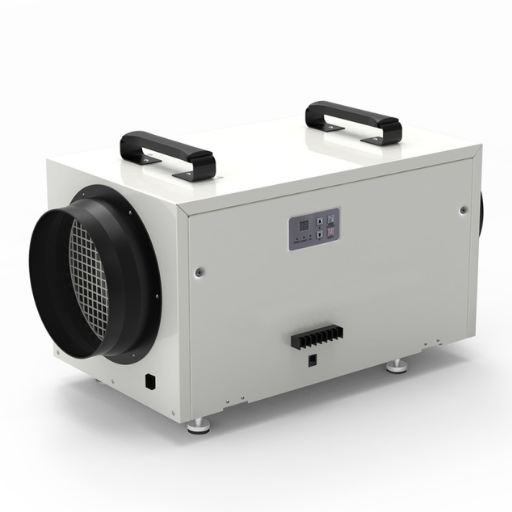
To maintain your crawl space dehumidifier for optimal performance, follow these steps:
Clean the Filters Regularly
Check and clean the dehumidifier filters every few weeks to remove dust and debris. Clogged filters can reduce efficiency and strain the unit.
Inspect the Drainage System
Ensure the drainage hose or water reservoir is clear and functioning properly. Blockages can cause water buildup and interrupt the dehumidifier’s performance.
Wipe Down the Coils
Periodically clean the coils to prevent dirt accumulation, which can impact the unit’s ability to condense moisture efficiently.
Check for Wear and Tear
Inspect the unit for signs of damage or aging components, such as cracks or leaks, and address any issues promptly.
Maintain the Surrounding Area
Keep the area around the dehumidifier clear of obstructions to allow proper airflow and prevent overheating.
Regular maintenance helps your dehumidifier run efficiently, prolonging its lifespan and ensuring your crawl space stays dry and protected.
Regular cleaning and filter replacement
I regularly clean my dehumidifier to ensure it works efficiently. For the filters, I check them every few weeks and clean or replace them as needed, depending on the manufacturer’s recommendations. Cleaning involves gently washing reusable filters with water or using a vacuum to remove dust and debris. If the filter is disposable, I replace it at the recommended intervals. Staying consistent with filter maintenance not only improves air quality but also helps the dehumidifier perform at its best.
Monitoring humidity levels and adjusting settings
To maintain optimal performance, it’s essential to monitor the humidity levels in your crawl space regularly. Ideally, the humidity should be kept between 30% and 50% to prevent issues like mold growth or structural damage. Use a hygrometer to measure the current humidity and adjust your dehumidifier settings accordingly. Many modern units have built-in humidity controls, allowing you to set a target level. If your dehumidifier doesn’t have this feature, you can manually adjust the settings to either increase or decrease the dehumidifier’s activity. Checking these levels weekly ensures your crawl space remains in a healthy range, and adjusting as seasons or conditions change will keep the space well-protected.
References
Heating, ventilation, and air conditioning
Frequently Asked Questions (FAQ)
Q: What is the best dehumidifier for large spaces like crawl spaces or basements?
A: The best dehumidifier for large spaces such as crawl spaces or basements typically offers a high moisture removal capacity. Models like the Aprilaire E130 are popular due to their efficiency and ability to handle high square footage, ensuring your crawlspace remains dry.
Q: How do I know if a commercial dehumidifier is necessary for my crawl space?
A: A commercial dehumidifier is often necessary if you have a large crawl space or need to control high levels of humidity. If the space has persistent moisture issues or if you plan to use it for storage, a commercial dehumidifier with pump capabilities could be beneficial.
Q: What makes a pint dehumidifier with pump ideal for crawl spaces?
A: A pint dehumidifier with pump is ideal for crawl spaces because it can automatically drain the collected water, which is helpful if the dehumidifier is in a hard-to-reach area. This feature saves you from constantly emptying the water reservoir and ensures continuous operation.
Q: How does a crawl space dehumidifier improve air quality?
A: A crawl space dehumidifier reduces moisture in your crawl space, preventing the growth of mold and mildew that can affect air quality. By maintaining appropriate relative humidity levels, it supports healthier air in your living space.
Q: How often should I check humidity levels in my crawl space?
A: You should check humidity levels in your crawl space regularly, especially during humid seasons. Keeping track of these levels helps ensure that your dehumidifier is working effectively to maintain the ideal relative humidity.
Q: Can a crawl space alone benefit from a crawlspace vapor barrier in conjunction with a dehumidifier?
A: Yes, a crawlspace vapor barrier can work alongside a dehumidifier to further prevent moisture from entering the space. This combination is highly effective in keeping your crawl space dry and reducing musty odors.
Q: What should I consider when installing a dehumidifier in my crawl space?
A: When installing a dehumidifier in your crawl space, consider the unit’s moisture removal capacity, coverage area, and ease of access for maintenance. Proper dehumidifier installation ensures optimal performance and helps maintain the desired moisture levels.
Q: Are there specific dehumidifiers recommended for small spaces like a crawl space?
A: Yes, for small spaces like a crawl space, the Aprilaire E070 or E080 models are highly recommended. They are compact, efficient, and designed to fit in tight areas while effectively controlling humidity.
Q: What is the role of HVAC ducts in managing humidity in crawl spaces?
A: HVAC ducts can help distribute conditioned air from your heating and air conditioning system into the crawl space, aiding in humidity control. However, a dedicated crawl space dehumidifier will provide more targeted moisture management.

